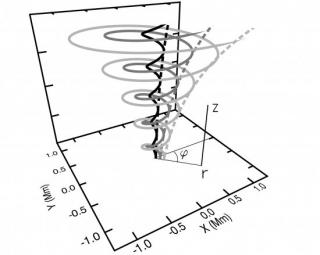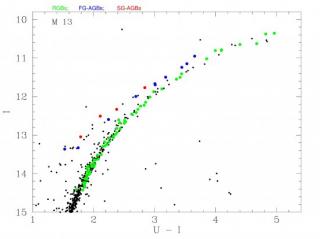
Proving the magnetic configuration of solar spicules has hitherto been difficult due to the lack of spatial resolution and image stability during off-limb ground-based observations. We report spectropolarimetric observations of spicules taken in the He I 1083 nm spectral region with the Tenerife Infrared Polarimeter II at the German Vacuum Tower Telescope at the Teide Observatory (Tenerife; Canary Islands; Spain). The data provide the variation with geometrical height of the Stokes I, Q, U, and V profiles whose encoded information allows the determination of the magnetic field vector by
Advertised on



